The name of the Messiah is Yeshua, a common alternative of the name Yehoshua (יהושע), which means ‘Yah is salvation’ [Matthew 1:21]
[In this article the Hebrew names El’azar (Lazarus); Kepha (Peter); Yohanan (John); Miryam (Mary) are used]
This article will attempt to answer two questions by using the internal evidence in the document:
1) Who wrote the document called ‘the book of John’?
2) Who was the ‘disciple that Yeshua loved’?
We start with the following points
• John the Baptist is referred to only as John and never as ‘John the Baptist’ to distinguish him from the author in the supposed case that it is Yohanan (John).
• The first three gospels mention three remarkable events in the ministry of Yeshua:
– the transfiguration – Matthew 26:36-46; Mark 9:2-9; Luke 9:28-36
– the prayer in Gethsemane – Matthew 26:36-46; Mark 14:32-42;Luke 22:39-46
– the resurrection of Jairus’ daughter – Matthew 9:18-26; Mark 5:22-43; Luke 8:41-56
Only three disciples were present on these significant events and Yohanan was one of them. Why are none of these events mentioned in the book called ‘John’ if it was written by Yohanan (John)?
• There are other events in which Yohanan was a main participant such as
– suggesting to bring down fire from heaven on a village that rejected Yeshua – Luke 9:54-55
– Yeshua sends Kepha and Yohanan to prepare the Passover supper – Luke 22:8
– Yohanan and his brother ask to sit to the right and to the left of Yeshua in his glory – Mark 10:35-41.
Why are these events not recorded in the document that carries his name?
• Yohanan mentions his name five times in the book of Revelation which he did write; on the other hand, the ‘beloved disciple’ avoids naming himself in the document.
To know who the author of the so-called Book of John is we have to begin at the end of the document.
*[Throughout this article, we will refer to the ‘document traditionally called ‘John’ in most versions of Scripture, as Beloved Disciple who is mentioned as the author in the document.]
*Beloved Disciple (traditionally John) 21:19-24 [The Scriptures - TS] 19...He said to him, “Follow Me.” 20 And Kepha{Peter}, turning around, saw the taught one whom יהושע{Yeshua} loved following, who also had leaned on His breast at the supper, and said, “Master, who is the one who is delivering You up?” 21 Seeing him, Kepha said to יהושע, “But Master, what about this one?” 22 יהושע said to him, “If I wish him to remain till I come, what is that to you? You follow Me.” 23 Therefore this word went out among the brothers that this taught one would not die. However, יהושע did not say to him that he would not die, but, “If I desire him to remain until I come, what is it to you?” 24 This is the taught one who bears witness about these matters, and wrote these matters. And we know that his witness is true. [Yeshua's words in purple] (Beloved is rendered close friend in some versions)
These are key words that the author uses to reveal his identity in a hidden way.
The author of this document is the <disciple that Yeshua loved> and obviously the words in verse 24 were added by other disciples who knew him and confirm his words <we know his testimony is true>.
Using the internal evidence within the document, we will attempt to identify who the <disciple that Yeshua loved> is. We must bear in mind that the author refers to himself repeatedly in the third person as the <disciple that Yeshua loved> or <the other disciple>.
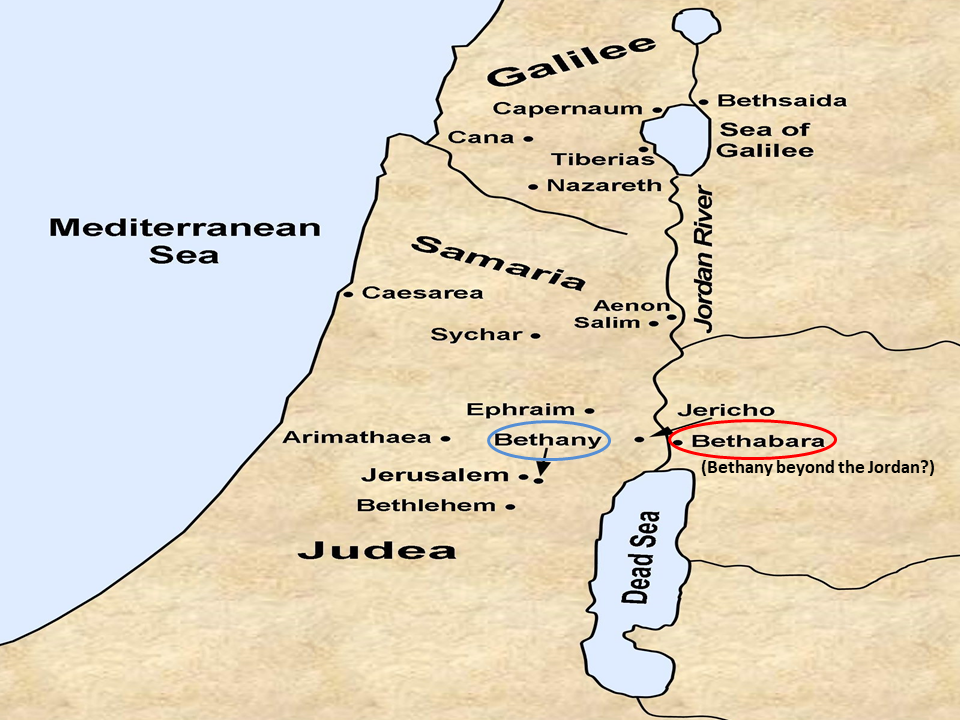 Beyth Anyah (Bethany) and Beyth Anyah Beyond the Jordan (Bethabara)
Beyth Anyah (Bethany) and Beyth Anyah Beyond the Jordan (Bethabara)
In the first chapter of the document, we are told that Yohanan the Immerser (John the Baptist) was immersing many people that came to him from Yerushalayim (Jerusalem) and Yehudah (Judah), announcing the imminent arrival of Yeshua. The ‘beloved disciple’ tells us where this was taking place
Beloved Disciple 1:28 [TS] This took place in Beyth Anyah{Bethabara?} beyond the Yarden, where Yohanan was immersing.
<Beyth Anyah beyond the Yarden>: Some translations render this term as Bethabara (House of the Crossing) beyond the Jordan in what today is part of modern-day Jordan. It is believed to have been on the east side of the Jordan across Jericho and 9 kilometres north of the Dead Sea and approximately 30 kilometres away from Jerusalem. There are discrepancies as to where ‘Beyth Anyah (Bethabara?) beyond the Jordan’ was situated and its exact location or even what its true name was. We know that it was beyond the Jordan River and aside from being the location where Yeshua was baptised and where Yohanan the Immerser preached, the area was the point of entry of the ‘children of the Eternal’ into the ‘Promised Land’, after wandering in the desert for forty years and where Eliyah ascended to the heavens in a chariot of fire.
Another small town known as Beyth Anyah (Bethany) was approximately 3 kilometres from Jerusalem. It was the home town of Yeshua’s very close friends Marta, Miryam and El’azar. Three times a year, during Passover, Shavuot (Feast of Weeks) and Sukkot (Feast of Tabernacles), every Yisraelite male was required to go up to the temple Mount in Yerushalayim (Jerusalem) and visit the Temple. Yeshua very likely, stayed with his friends in Beyth Anyah during those occasions as Jerusalem was just a few hours walk away.
The document of the ‘Beloved Disciple’ narrates the part of Yeshua’s life that revolved around these two places.
THE FIRST DISCIPLES OF YESHUA
Beloved Disciple 1:35-42 [HRB] 35 Again on another day, John{the Immerser} and two from his disciples stood. 36 And looking at Yahshua walking, he said, Behold, the Lamb of YAHWEH! 37 And the two disciples heard him speaking, and they followed Yahshua. ... 40 Andrew the brother of Simon Peter was one of the two who heard from John and was following Him.
The author of the document shows that the first two persons that were inspired to follow Yeshua were Andrew and ‘another’ who is left unmentioned; both were disciples of Yohanan the Immerser (John the Baptist). This ‘other disciple’ was most probably the author as he constantly conceals his identity throughout the document except in chapter 11.
“THE ONE WHOM YOU LOVE IS SICK”
Beloved Disciple 11:1-3 [TS]
1 And a certain one was sick, Elʽazar{Lazarus} from Beyth Anyah {Bethany}, the village of Miryam and her sister Martha.
2 (Now it was Miryam who anointed the Master with perfume and wiped His feet with her hair, whose brother Elʽazar was sick).
3 Therefore the sisters sent to Him, saying, “Master, see, he whom You love is sick.”
El’azar (Lazarus) from Beyth Anyah is named for the first time. He is called <the one whom you love> by his sisters. El’azar is the <disciple that Yeshua loved>, he is the author of the document and he is describing the events that took place in Beyth Anyah where he and his sisters Miryam and Marta lived.
Again in verse 5 the author states how Yeshua loved his friends from Beyth Anyah
John 11:5-6 [HRB]
5 And Yahshua loved Martha and her sister and Lazarus.
However when Yeshua heard that El’azar was sick, he did not go immediately to see him, he stayed where was for two more days (11:6). What was the reason behind this? [For further insight see YESHUA WAITED TWO DAYS BEFORE GOING TO SEE LAZARUS]
THE DEATH OF EL’AZAR:
El’azar is the first disciple to glorify the Eternal with his death.
When Yeshua heard that the ‘beloved disciple’ was sick he said
Beloved Disciple 11:4 [Hebraic Roots Bible] This is not sickness to death, but for the glory of Yahweh, that the Son of Yahweh be glorified by it.
The death of El’azar would be for the glory of ‘the Son of Yahweh’. When the Son is glorified, the Father Yahweh is glorified. El’azar glorified the Eternal with his death before anybody else did. Yeshua would later go on to revive El’azar with the power that the Eternal gave him and in this way the Eternal would be glorified.
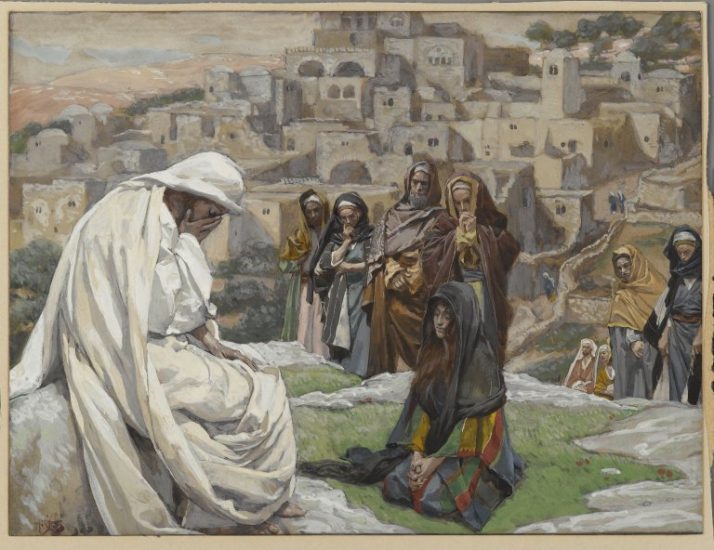
YESHUA WEPT OVER EL’ZAR: “SEE HOW HE LOVED HIM”
Scripture records that Yeshua wept on two occasions, once over Yerusalayim (Jerusalem) and on then event of Elazar’s death.
When Yeshua and the disciples heard that El’azar had died, they set off into Beyth Anyah. Marta went out to receive him before he reached the village
Beloved Disciple 11:33 [TS] 33 יהושע{Yeshua}, therefore, when He saw her{Miryam} weeping, and the Yehudim{Jews} who came with her weeping, He groaned in the spirit and was troubled, 34 and said, “Where have you laid him?” They said to Him, “Master, come and see.” 35 יהושע wept. 11:36 The Yehudim therefore said, “See how He loved him!”
EL’AZAR IS RAISED BY YESHUA: “EL’ZAR, COME FORTH”
John 11:41-44 [WOY - Word of Yahweh]
41 Then they took away the stone from the place where the dead was laid. And Yahshua lifted up his eyes, and said, Father, I thank thee that thou hast heard me.
42 And I knew that thou hearest me always: but because of the people which stand by I said it, that they may believe that thou hast sent me.
43 And when he thus had spoken, he cried with a loud voice, Lazarus, come forth.
44 And he that was dead came forth, bound hand and foot with grave-clothes
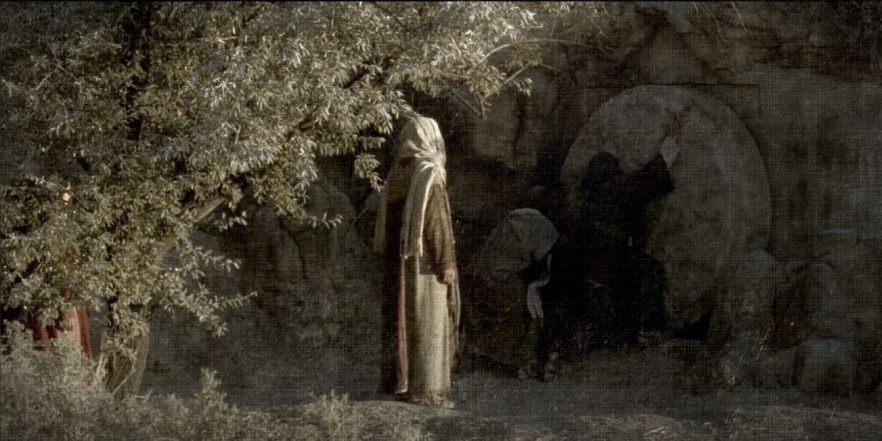
The restoration to life of El’azar by Yeshua occupies a central place in the document. Yeshua revived Jairus’ daughter (Luke 8:41-56) and the widow’s son (Luke 7:12-16) and in both cases he revived them right after their death. In the case of El’azar he had been dead four days and his remains already had a bad odour; this is probably the reason that Yeshua remained two days more where he was when he was told the news as it added to the greatness of this sign. Because of this, it is the biggest and most spectacular sign in the Gospels. This event triggered the plot to murder Yeshua and El’azar as well.
Beloved Disciple 12:9-11 9 Then a great crowd of the Yehudim{Jews} learned that He was there. And they came, not on account of יהושע{Yeshua} only, but also to see Elʽazar, whom He had raised from the dead. 10 And the chief priests resolved to kill Elʽazar as well, 11 because on account of him many of the Yehudim went away and believed in יהושע.
EL’AZAR IS CLOSER TO YESHUA THAN KEPHA AND THE OTHERS DURING YESHUA’S LAST PASSOVER
The Last Passover of Yeshua with his disciples recorded in this document is slightly different from the others. The author (the beloved disciple) describes himself as ‘leaning on Yeshua’s bosom’ (13:23), so much so, that Kepha does not directly ask Yeshua who would betray him, rather he does it through El’azar (13:25).
IN THE COURTYARD OF QAYAPHA’S (CAIAPHAS’) HOUSE
The document records that the ‘other disciple’ was known to the high priest.
It makes sense that El’azar knew the high priest as the he lived in Beyth Anya near Yerusalayim as opposed to the case of Yohanan (John), a fisherman from Galilee; it would be far-fetched that he would be known to the high priest of the Temple in Yerushalayim.
Beloved Disciple 18:14-16 [TS] 14 Now Qayapha was the one who gave counsel to the Yehudim that it was better that one man should die for the people. 15 And Shimʽon Kepha followed יהושע, with another taught one, and that taught one was known to the high priest, and went with יהושע into the courtyard of the high priest. 16 But Kepha was standing outside at the door. So the other taught one, who was known to the high priest, went out and spoke to her who kept the door, and brought Kepha in.
When the Eternal inspires a person to write down something twice, one after the other, He is calling our attention to something important, in this case: Qayapha knew the disciple that was with Kepha. Who was this disciple known by the High Priest?
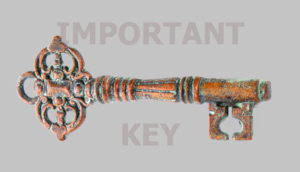 THE ARREST OF KEPHA AND YOHANAN
THE ARREST OF KEPHA AND YOHANAN
There is a hidden key in Acts 4:1-23.
After Yeshua’s resurrection, Kepha (Peter) and Yohanan (John), having healed a lame man at the gate of the Temple, spoke to the people about Yeshua of Natzareth. The religious leadership was annoyed because they proclaimed the resurrection of the dead through Yeshua. Kepha and Yohanan were arrested and went through an interrogation by the religious authorities, among them Qayapha who was high priest at the time that Yeshua was arrested
Note on the High Priests Hanan (Annas) and Qayapha (Caiaphas):
Some are confused to see two High Priests together as in Luke 3:2. David Stern in his Jewish New Testament Commentary clarifies this for us
…Could there be two high priests? No, Anan (Annas) was cohen gadol (high priest) for some years until 15 C E and was deposed by the Romans – the office was no longer held for life but was manipulated by the Romans for political purposes. Anan’ son in law Kayafa attained the office in 25 or 26 C.E. and was deposed in 36; he is mentioned in all four gospels as the cohen gadol presiding over Yeshua’s two trials and archaeologists in Jerusalem have recently unearthed his tomb. Nevertheless Anan remained a powerful figure (see John 18:12-24), and it was natural to continue calling him cohen gadol (compare Acts 4:6), since for Jews, this office was held for life.
David Stern ,Jewish New Testament Commentary, page 112.
Going back to the key information in Acts 4 we look at verse 13
Acts 4:13 And seeing the boldness of Kepha{Peter} and Yohanan{John}, and perceiving that they were unlearned and ordinary men, they marvelled. And they recognised that they had been with יהושע.
These events described in in Acts 14 show us the following:
1) Qayapha and the religious authorities were not formerly acquainted with Kepha (Peter) and Yohanan (John).
Recalling the event of Yeshua’s arrest it is recorded that <the disciple that Yeshua loved was known by Qayapha>, the high priest at the time. Therefore, Yohanan cannot be the ‘disciple that Yeshua loved’.
2) The religious authorities perceived that Kepha and Yohanan were «unlearned and ordinary men». This document of the ‘Beloved Disciple’ is full of symbolism and literary richness; it could not have been written by an unlearned and ordinary man. Yohanan (John) a fisherman from Galilee cannot be the author (although in his old age, he was given a vision in the isle of Patmos and he did write the book of Revelation).
AT THE CROSS YESHUA ENTRUSTS HIS MOTHER TO EL’AZAR
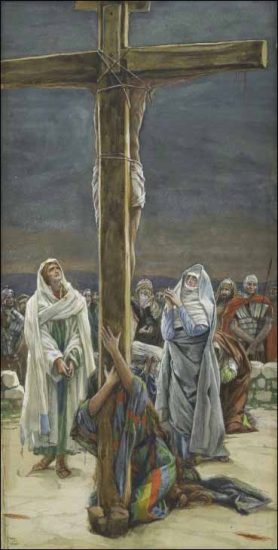
When Yeshua was arrested the disciples dispersed out of fear of the Romans and also they were disheartened and confused because the Master was taken from them.
Scripture records that Shimon Kepha and the ‘beloved disciple’ followed Yeshua to Caiaphas’ house.
Once Yeshua was nailed to the cross it was only a small group of women (among them his mother) and the ‘beloved disciple’ that were there standing by
Beloved Disciple 19:26-27 [HRB]
26 Then seeing His mother, and the disciple whom He loved standing by, Yahshua said to His mother, Woman, behold your son!
27 Then He said to the disciple, Behold, your mother! And from that hour, the disciple took her into his own home.
El’azar was the first to look inside Yeshua’s empty tomb:
Beloved Disciple 20:1-8 1 And on the first day of the week Miryam from Magdala came early to the tomb, while it was still dark, and saw that the stone had been removed from the tomb 2 So she ran and came to Shimʽon Kepha, and to the other taught one whom יהושע loved, and said to them, “They have taken the Master out of the tomb, and we do not know where they laid Him.” 3 Then Kepha and the other taught one went out, and they were going to the tomb, 4 and the two were running together, but the other taught one outran Kepha and came to the tomb first. 5 And stooping down he saw the linen wrappings lying, but he did not go in. 6 Then Shimʽon Kepha came, following him, and went into the tomb. And he saw the linen wrappings lying, 7 and the cloth which had been on His head, not lying with the linen wrappings, but folded up in a place by itself. 8 So, then, the other taught one, who came to the tomb first, also went in. And he saw and believed.
El’azar not only shows humility by not mentioning his name, he also shows respect toward the authority of Kepha and does not enter the tomb even if he got there first.
However, it also says that the other disciple saw and believed.
We find another important key in the Book of Mark
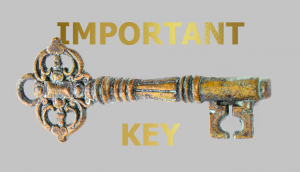
Mark 16:14
Later He appeared to the eleven as they sat at the table. And He reproached their unbelief and hardness of heart, because they did not believe those who had seen Him after He was raised.
After resurrecting Yeshua shows himself to the eleven and scolds them for not believing that he had resurrected. Note that Yohanan was among them, so he was not the disciple that «saw and believed». It was El’azar who saw and believed. Therefore, Yohanan is not the one known as the ‘disciple that Yeshua loved’.
ON THE BOAT: EL’AZAR IS THE FIRST TO RECOGNISE YESHUA
After Yeshua’s resurrection, Shimon Kepha and six other disciples including the ‘beloved disciple’ (21:2) had been out fishing all night without being able to catch anything until a ‘mysterious’ figure that was on the shore suggested that they throw the net on the right side of the boat. When they did, they caught a great amount of fish. The ‘beloved disciple’ recognised this ‘mysterious’ person
Beloved Disciple 21:7 That taught one whom יהושע loved then said to Kepha, “It is the Master!”
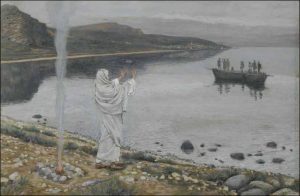
The author mentions the other disciples (Shimon Kepha (Peter), T’oma (Thomas) [also called the Twin], Nethane’l, the sons of Zabdai [Yohanan and Ya’qob] and two others. It is obvious that he continues his practice of not giving his name and that he is one of the two unmentioned disciples identified only as the <disciple that Yeshua loved>. Yohanan is not mentioned by name but he is included in ‘the sons of Zabdai’. He is not the ‘beloved disciple’.
El’azar is present in one of the last encounters Yeshua had with his disciples:
Beloved Disciple 21:19b-24 19b…He{Yeshua} said to him{Kepha}, “Follow Me.” 20 And Kepha, turning around, saw the taught one whom יהושע loved following, who also had leaned on His breast at the supper, and said, “Master, who is the one who is delivering You up?” 21 Seeing him, Kepha said to יהושע, “But Master, what about this one?” 22 יהושע said to him, “If I wish him to remain till I come, what is that to you? You follow Me.” 23 Therefore, this word went out among the brothers that this taught one would not die. However, יהושע did not say to him that he would not die, but, “If I desire him to remain until I come, what is it to you?” 24 This is the taught one who bears witness about these matters, and wrote these matters. And we know that his witness is true.{This verse is obviously an addition by a disciple or disciples known to El'azar confirming his words}
All this internal evidence identifies El’azar as the author of the so-called ‘book of John’ and equally important, the evidence points to El’azar as the <disciple that Yeshua loved>.
WHY IS EL’AZAR NOT MENTIONED IN THE OTHER GOSPELS?
None of the other writings of the disciples of Yeshua focus on El’azar. The resurrection of El’azar is Yeshua’s most significant sign and yet it is not mentioned in the other three Gospels.
Some scholars and theologians, like Gerd Theissen, maintain that Lazarus and his coming back to life is not mentioned in the other three Gospels is due to ‘protective anonymity’. Theissen argues that people are left anonymous or unmentioned because if their names got back to the authorities in Yerushalayim, they could be implicated as accomplices in Yeshua’s “revolt.” In other words the other Gospels do not mention Lazarus and the events surrounding him for his own good and protection.
Beloved Disciple 12:9-11; 17-18 [TS]
9 Then a great crowd of the Yehudim learned that He was there. And they came, not on account of יהושע{Yeshua} only, but also to see Elʽazar{Lazarus}, whom He had raised from the dead.
10 And the chief priests resolved to kill Elʽazar as well,
11 because on account of him many of the Yehudim went away and believed in יהושע.
...
17 Therefore the crowd, who were with Him when He called Elʽazar out of his tomb and raised him from the dead, were bearing witness.
18 On account of this the crowd also met Him, because they heard that He had done this sign.
No other writings explain that part of the reason that the ‘great multitude’ received Yeshua proclaiming him King and Messiah was that he had resurrected El’azar after being dead for four days.
In the end, it is important to know who wrote this document and who the ‘beloved disciple’ was but the beautiful and profound message of this book is what really matters.
All the glory be to Yeshua and his Father the Eternal Yahweh.
Sources: Avdiel ben Oved; Mijael Almonacid; Iaaqov Costa; Ryan Leasure (Gerd Theissen – The Gospels in Context; David Stern ,Jewish New Testament Commentary; Josephus – Antiquities 20. 97-98; Richard Bauckham, Jesus, and the Eyewitnesses, 2nd ed. 290); Popular New Testament Commentary